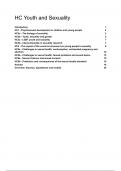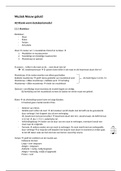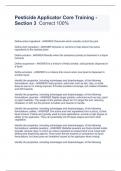Samenvatting
Summary All lectures and articles from Youth and Sexuality
- Instelling
- Universiteit Utrecht (UU)
This summary of the course Youth and Sexuality is short and clear. No important information is left behind, eventough it's written in a short way, to minimaze the number of pages. It contains an summary of all the 23 articles of the course. At the end there is an overview of the theories, models a...
[Meer zien]













